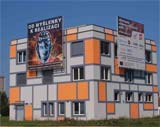Endocrine regulation of non-circadian behavior of circadian genes in insect gut
Datum: 23.9.2015
The linden bug Pyrrhocoris apterus exhibits a robust diapause response to photoperiod. Photoperiod strongly affected basal levels of circadian gene transcripts in the gut, via the neuroendocrine system. Cryptochrome 2 (cry2) mRNA level was much higher in diapause promoting short days (SD) than in reproduction promoting long days (LD), while Par Domain Protein 1 (Pdp1) mRNA level was higher in LD than in SD. The effect of photoperiod on gene expression was mediated by the neurosecretory cells of the pars intercerebralis (PI) and the juvenile hormone (JH) producing corpus allatum (CA). In LD-females, CA ablation resulted in SD-like levels of gene transcripts, while PI ablation had little effect. Conversely, in SD-females, CA ablation had only a little effect, while PI ablation resulted in LD-like levels of gene transcripts.
Thus, the CA is responsible for LD-like characteristics of gene expression in reproducing females and the PI is responsible for SD-like characteristics of gene expression in diapausing females. A simultaneous ablation of both PI and CA revealed two roles of PI in SD-females: (1) inhibition of CA, and (2) weak CA-independent stimulation of cry2 mRNA. Overall, our results indicate that peripheral circadian gene expression in the gut reflects the physiological state of females (with respect to diapause or reproduction) rather than the external light-dark cycle.
Read more at:
We acknowledge the use of research infrastructure that has received funding from the European Union Seventh Framework Programme (FP7/2007-2013) under grant agreement n° 316304.
68
- Vyhledávání:
- Organizace
- Projekty
- Zaměstnání
- Knihy
- Časopisy
- Slovník
- Akce
- Kontakt
























